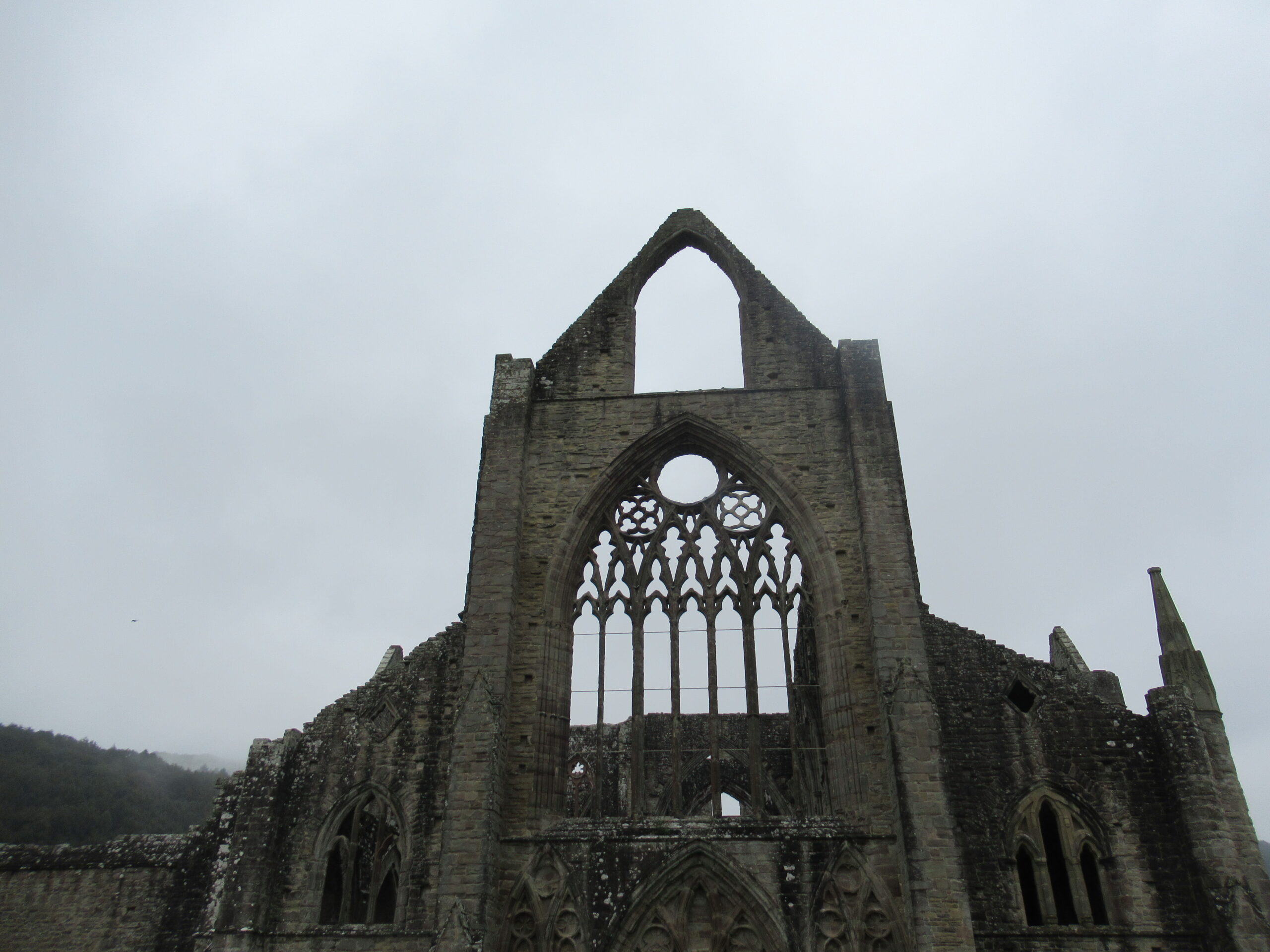It’s a gloomy Tuesday morning in September – leaves are already on the pavements – and four of us have gathered for the group photo in the Castle car park in Chepstow before making a start on the first half of the Wye Valley Walk. C and CE are veterans of our first walk from Chepstow, in May 2019, to tackle the much harder Offa’s Dyke Path. Our plan today is to get as far as Hay-on-Wye, leaving the upland section of the Walk till next year.
At breakfast in the pub where we stayed the night before we spotted a couple with backpacks. They looked like outdoor people. Our initial assessment – that they were oldish and unlikely to be walking far or fast, if they were walkers at all – will prove very wide of the mark. We’ll see them, the Couple from Chepstow, time and time again over the next week.
We’re already well pasta’d with carbohydrates, after a meal the evening before in the Panevino restaurant, and we march energetically up the path on the west side of the Castle, past the large stone that marks the official start of the Walk. It was carted all the way from the other terminus, Pumlumon, and features a plaque bearing the Walk’s logo, a leaping salmon – a choice that’s become an unfortunate one, as we find out later. The castle walls seem to go on up the slope for ever. Chepstow was the first Norman stone castle in Wales. Its owner, William FitzOsbern, and his fellow barons started as they meant to continue, roaring and castling their way through the rest of Wales.
We get lost as soon as we reach the road at the end of the path. The official guidebook sends us into the grounds of a primary school instead of down the right path: the first of very many occasions when its instructions are ambiguous or misleading. It’s trying to drizzle as we enter woodland on a path that continues high, through Piercefield, a riverside estate planted and landscaped by Valentine Morris and his successors in the eighteenth and early nineteenth centuries. The idea was to tickle the picturesque fancies of genteel visitors to the lower Wye. They would start off in boats from Ross and drift downriver, admiring and sketching the shifting scenery along the way. The trend had been set by Rev. William Gilpin, whose book Observations on the River Wye, published in 1782, drew the attention of polite English society to the artistic potential of the Wye’s twisting route and its wooded banks. Gilpin largely ignored the particulars of the landscape, the villages, the industry and the people, treating it instead as an abstract canvas for picture-making.
The picturesque movement was closely entwined with the ugliness of human slavery. Valentine Morris was the son of a West Indian sugar plantation owner, and the profits of slavery funded his development of the estate at Piercefield. In 1802 the estate was bought by Nathaniel Wells, the mixed-race son of another plantation owner, William Wells, and Juggy, a black house slave. In 1818 he went on to become Britain’s first black Sheriff – but still owned and benefited from his inherited slave estates in St Kitts.
The light rain has made the pebbles and earth slippery, and we make slow progress up and down the wooded path. Those of us with walking sticks are glad of their help. Only now and then does the tree cover relent to allow murky views down across the river, at The Alcove, The Platform and The Grotto, the last a manufactured tunnel of rock (alas, there is no Hermit currently in residence). Later on we face a choice: 365 steep steps, or a gentler but roundabout route to the left. I’m outnumbered in the vote. We take the longer path, and so miss the Eagle’s Nest view promised by the guidebook.
The path finally becomes less ‘picturesque’ and descends to join a lane into Tintern, emerging not far from the Abbey. The last time we were here there were crowds of people, but today just a few end-of-season trippers admire the views. We follow the main road, and then branch off through meadows to follow the Wye. The river’s low, slow and grey, flowing back with the incoming tide. Lately it’s been in the news for the wrong reasons, as anxieties rise about the effects on fish and other wildlife of the phosphates that wash into it, many from poultry farms (the Wye catchment is now ‘Chicken Central’).
We reach the Old Station Café, last visited in 2018, when we deviated from the Offa’s Dyke Path to sample the coffee and cakes. The coffee’s still good, but this time there’s no orange chocolate cake, and we have to make do with flapjacks. The railway line was a victim of Dr Beeching in 1964; had it survived it would now be a fine tourist attraction and an alternative to the busy road.
After Brockweir Bridge we climb back into coniferous woodland, filled by now with a mysterious mist, and we stay they until we reach Cleddon. Here William Wordsworth is said to have composed his ‘Lines written a few miles above above Tintern Abbey’. We rehearse briefly our arguments for and against the poetic worth of Wordsworth (M. joins me in the anti camp) and then walk down to Llandogo on a long and very steep looping lane. We briefly meet G., who lives in the village and can tell us about the local locations used for shooting the Netflix series Sex education, and we say farewell to CE, who’s going home. A taxi arrives to take us back to Tintern, for a meal with G. in the Wye Valley Hotel, and so to bed.








Leave a Reply